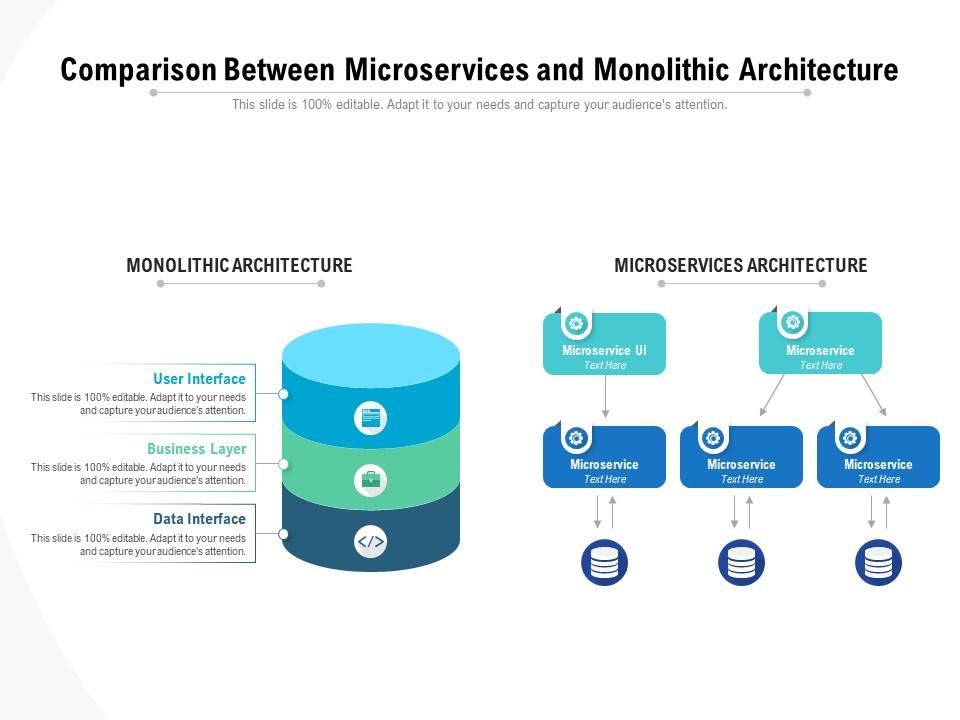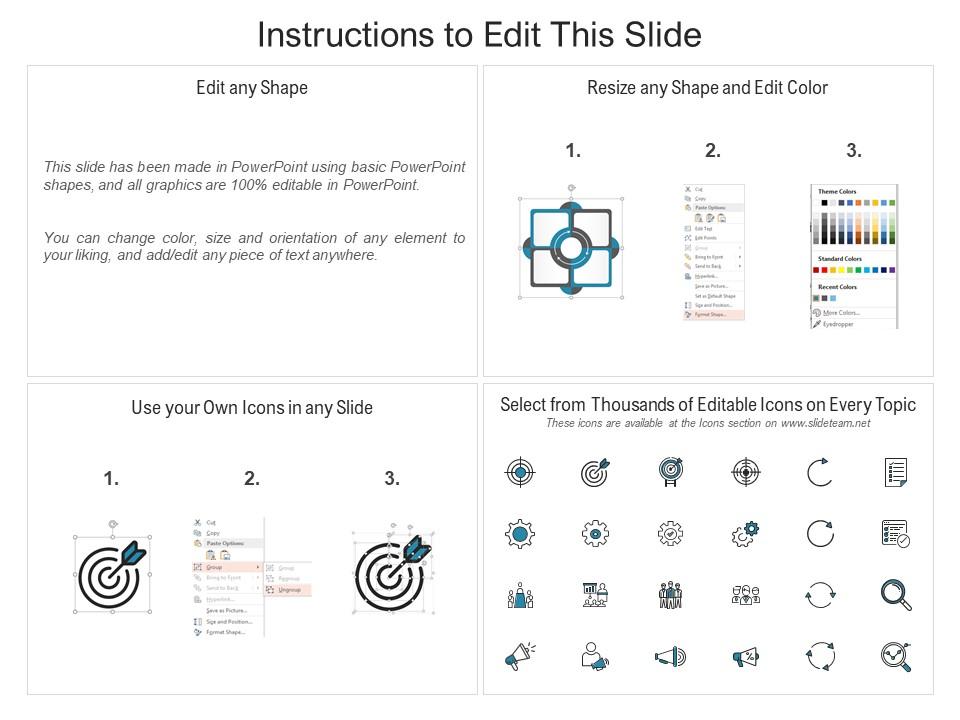Comparison between microservices and monolithic architecture
Acknowledge the audience with our Comparison Between Microservices And Monolithic Architecture. They will be appreciative of your every effort.
- Google Slides is a new FREE Presentation software from Google.
- All our content is 100% compatible with Google Slides.
- Just download our designs, and upload them to Google Slides and they will work automatically.
- Amaze your audience with SlideTeam and Google Slides.
-
Want Changes to This PPT Slide? Check out our Presentation Design Services
- WideScreen Aspect ratio is becoming a very popular format. When you download this product, the downloaded ZIP will contain this product in both standard and widescreen format.
-

- Some older products that we have may only be in standard format, but they can easily be converted to widescreen.
- To do this, please open the SlideTeam product in Powerpoint, and go to
- Design ( On the top bar) -> Page Setup -> and select "On-screen Show (16:9)” in the drop down for "Slides Sized for".
- The slide or theme will change to widescreen, and all graphics will adjust automatically. You can similarly convert our content to any other desired screen aspect ratio.
Compatible With Google Slides

Get This In WideScreen
You must be logged in to download this presentation.
PowerPoint presentation slides
Presenting this set of slides with name Comparison Between Microservices And Monolithic Architecture. This is a two stage process. The stages in this process are Microservices, Client Browser, Inventory Service. This is a completely editable PowerPoint presentation and is available for immediate download. Download now and impress your audience.
Content of this Powerpoint Presentation
Description:
The image depicts a PowerPoint slide titled "Comparison Between Microservices and Monolithic Architecture," designed to illustrate the differences between these two software architecture styles.
1. On the left side, the Monolithic Architecture is represented by a single large cylinder divided into three horizontal layers labeled:
a). User Interface
b). Business Layer
c). Data Interface
This illustrates the traditional monolithic approach where all parts of the application are tightly integrated and deployed as a single unit.
2. On the right side, the Microservices Architecture is shown with separate smaller rectangular blocks, each labeled "Microservice" followed by a "Text Here" placeholder. These blocks are interconnected but distinct, signifying that in a microservices architecture, each service is developed, deployed, and managed independently.
Use Cases:
This conceptual slide can be applied in various industries that rely on software development and deployment:
1. Technology and Software Development:
Use: Explaining software architecture choices for system design.
Presenter: Systems Architect
Audience: Developers, project managers
2. Banking and Financial Services:
Use: Detailing the transition of banking software to more modular systems.
Presenter: IT Director
Audience: IT staff, financial analysts
3. Healthcare:
Use: Describing healthcare platforms' evolution to support various independent services.
Presenter: Health Informatics Specialist
Audience: Hospital management, IT teams
4. Retail:
Use: Outlining the structure of retail management systems for scalability.
Presenter: E-commerce Manager
Audience: Retail strategists, technical staff
5. Education:
Use: Demonstrating educational platforms' design for better module management.
Presenter: Educational Technology Consultant
Audience: Administrators, IT personnel in education
6. Government:
Use: Discussing public service portals' architecture for independent service management.
Presenter: Chief Information Officer
Audience: Government officials, policy makers
7. Telecommunications:
Use: Showcasing the architecture of systems managing various independent telecom services.
Presenter: Network Architect
Audience: Engineers, product managers
Comparison between microservices and monolithic architecture with all 2 slides:
Display entrepreneurial expertise with our Comparison Between Microservices And Monolithic Architecture. Energize them with exciting thoughts.
No Reviews












